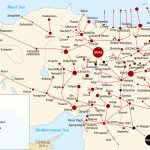Pantheon of Armenian Pagan Gods and Goddesses
PANTHEON – EPIC HEROES – Mythical Creatures
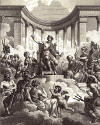
Armenian Gods and Goddesses – Armenian Mythology
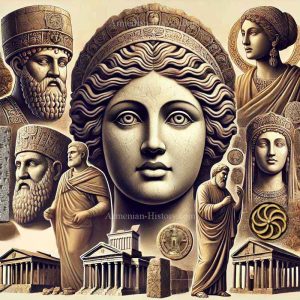
Aramazd (Zeus)

Aramazd was the master of all Armenian gods, the father of all deities, and the creator of heaven and earth. He was revered as the “Great and Courageous Aramazd.” As the source of earth’s fertility, he was believed to bring abundance and prosperity. The celebration in his honor, called Am’nor or New Year, was observed on March 21 in the ancient Armenian calendar, coinciding with the Spring Equinox. Aramazd’s primary sanctuary was located in Ani Kamakh, one of the significant cult centers of Ancient Armenia. The treasures and royal mausoleums of the Armenian Arshaguni (Arshakuni) kings were also housed there.
Anahit (Artemis)
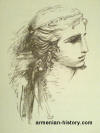
Anahit was the most beloved and honored Armenian goddess, known as the mother-goddess and either the daughter or wife of Aramazd. She was often depicted holding a child and adorned with the distinctive hairstyle of Armenian women. Referred to as “Great Lady Anahit,” she was revered as the embodiment of maternity and fertility. Her worship was centered in regions such as Eriza, Armavir, Artashat, and Ashtishat in Ancient Armenia. A mountain in the Sophene district was known as Anahit’s throne (Athor Anahta).
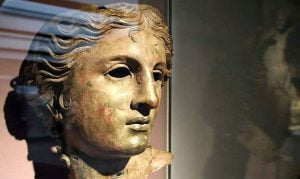
According to Plutarch, the temple of Eriza was the wealthiest and the noblest in Armenia. During the expedition of Mark Antony into Armenia (34 B.C), the statue was crushed into pieces by the Roman soldiers. Pliny the Elder gives us the following story about it: The Emperor Augustus, being invited to dinner by one of his generals, asked him if it was true that the wreckers of Anahit’s statue had been punished by the wrathful goddess. “No”! answered the general, “on the contrary, I have to‑day the good fortune of treating you with one part of the hip of that gold statue“.
Vahagn (Heracles)
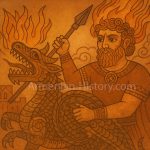

Vahagn was the god of thunder, lightning, and war, making him the third deity in the Armenian Pantheon. His main sanctuary was located in Ashtishat, a city in the Taron region of Armenia. Before going to battle, Armenian kings and warlords sought Vahagn’s favor and support.
The Ancient Armenian Origin of Vahagn’s Birth Song – Armenian Mythology
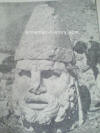
In travail were heaven and earth,
In travail, too, the purple sea!
The travail held in the sea the small red reed.
Through the hollow of the stalk came forth smoke,
Through the hollow of the stalk came forth flame,
And out of the flame a youth ran!
Fiery hair had he,
Ay, too, he had flaming beard,
And his eyes, they were as suns!
Վահագնի ծննդյան երգի հին հայերեն բնագիրը. Armenian version
Երկնէր երկին, երկնէր երկիր,
Երկնէր եւ ծովն ծիրանի՜.
Երկն ի ծովուն ունէր եւ զկարմրիկն եղեգնկ.
Ընդ եղեգան փող ծուխ ելանէր,
Ընդ եղեգան փող բոց ելանէր.
Եվ ի բացոյն վազէր խարտեաշ պատանեկիկ.
Նա հուր հեր ուներ,
Բոց ունէր մօրուս,
Եվ աչկունքն էին արեգակունք:
Astghik (Greek – Aphrodite, Mesopotamian – Ishtar)
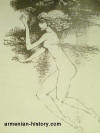
Astghik, the goddess of love, beauty, and water, was either the wife or lover of Vahagn. Her temple in Astishat was known as “Vahagn’s Room,” the place where she would meet her beloved Vahagn. Astghik was often depicted as a beautiful young woman, unclothed, during her ritual swim. The celebration in her honor, Vardevar (Vardavar), occurs in mid-June and is still celebrated in Armenia by dousing one another with water.
Nane (Athena)

Nane, the daughter of Aramazd, was the goddess of war. Her cult was closely connected with Anahit’s, and it is no coincidence that her temple was located in the Ekegyac region near Anahit’s. Today, Armenians often call their grandmother “Nane” or “Nan,” reflecting Nane’s deep influence on ancient Armenian spiritual life.
Mihr
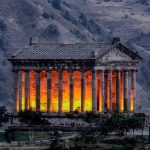
Mihr was the god of the sun and heavenly light, the son of Aramazd, and the brother of Anahit and Nane. His primary worship was centered in Bagaharich. The pagan temple of Garni was dedicated to Mihr’s worship.

Tir (Apollo)

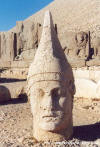
Tir was the god of wisdom, science, and learning. He was also an interpreter of dreams and served as the secretary to Aramazd. One of Tir’s temples was located near Artashat and was called “Aramazd’s Grchi Divan” or the “Temple of Learning.”
Amanor and Vanatur

Amanor and Vanatur, possibly the same god under different names, were the deities of the Armenian New Year and the lord of the new harvest. The celebration in their honor took place at the end of July and was known as Navasard (New Year). Their primary worship was located in the city of Bagavan. While Amanor was the god of the new year and new yield, Vanatur was the god of hospitality and generous hosts.
Tsovinar (Tzovinar)

Tsovinar was the goddess of water, sea, and rain, depicted as a fire creature who brought forth rain and hail from the heavens with her fury.
Spandaramet (Hades)
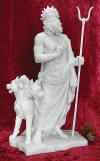
Spandaramet was the god of the underworld, ruling over the realm of the dead.
Aralezs
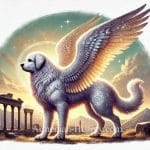
The Aralezs were the oldest gods in the Armenian pantheon, depicted as dogs with the power to resurrect the dead by licking their wounds clean.
Barshamin (Barshimnia)
Barshamin was one of the idols brought to Armenia by Tigran from Mesopotamia. Housed in the village of Thordan in Daranaghi, the brilliantly white idol was made of ivory and crystal, adorned with silver. The name Barshamin is derived from the Phoenician Ba-ala-shamin, meaning “lord of the heavens,” akin to the Babylonian Bel.
Gissaneh (Kissaneh) and Demeter-Demetr
These two idols are mentioned by Hovhan Mamikonian, a historian from the seventh century, who reported the fierce struggle of paganism in Taron, though Agathangelos does not acknowledge their existence.
Monumental Armenian Gods of Mount Nemrut
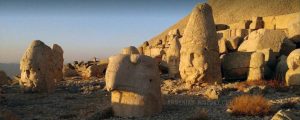
The statues of Armenian gods at Mount Nemrut, a UNESCO World Heritage site, stand as monumental representations of the ancient Armenian pantheon. These colossal figures, intricately carved into the mountain, symbolize the reverence ancient Armenians held for their deities, including Aramazd, the father of all gods, Vahagn, the god of war, Anahit, the mother goddess, and Astghik, the goddess of love and beauty. The blend of Armenian and Hellenistic influences in these statues reflects the rich cultural fusion of the time, making them a unique testament to the region’s spiritual and artistic heritage.
Similarity of the Armenian Pantheon with Iranian and Greek Pantheons
Armenian Mythology
| Armenian | Iranian | Greek |
| Aramazd | Ahuramazda | Zeus |
| Anahit | Anahita | Artemis |
| Vahagn | Verethragna | Heracles |
| Astghik | — | Aphrodite |
| Nane | Nanā | Athena |
| Mihr | Mithra | Hephaestus |
| Tir | Tishtrya / Tir | Apollo |
| Amanor and Vanatur | — | — |
| Tsovinar (Tzovinar) | — | Poseidon |
| Spandaramet or Sandaramet | Spenta Armaiti | Hades |
| Aralezs | — | — |
| Barshamin or Barshimnia | Baal-Shamem | Zeus |
| Gissaneh (Kissaneh) | — | Demeter |
Armenian Mythology – Source:
Armenian-History.com




